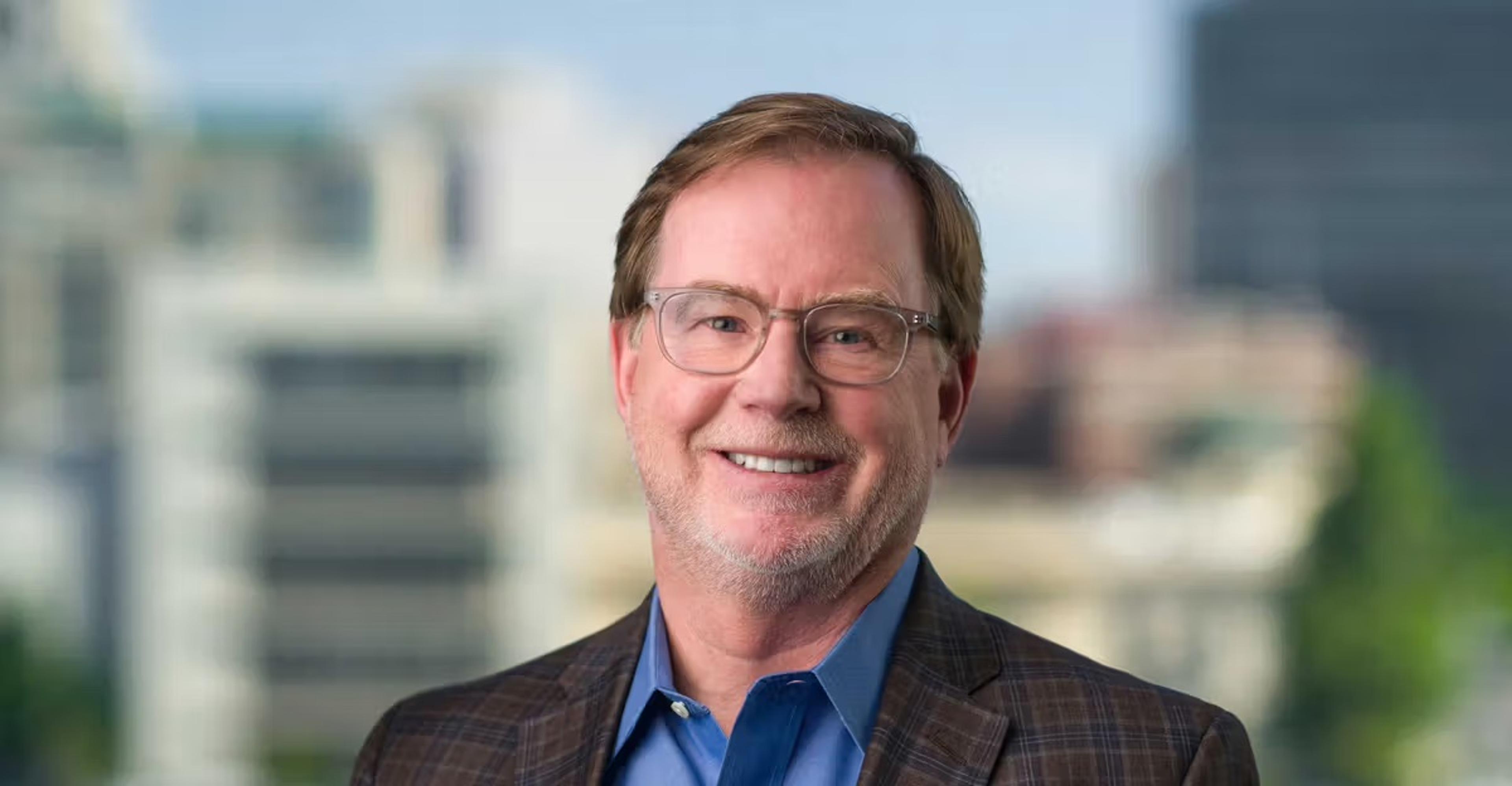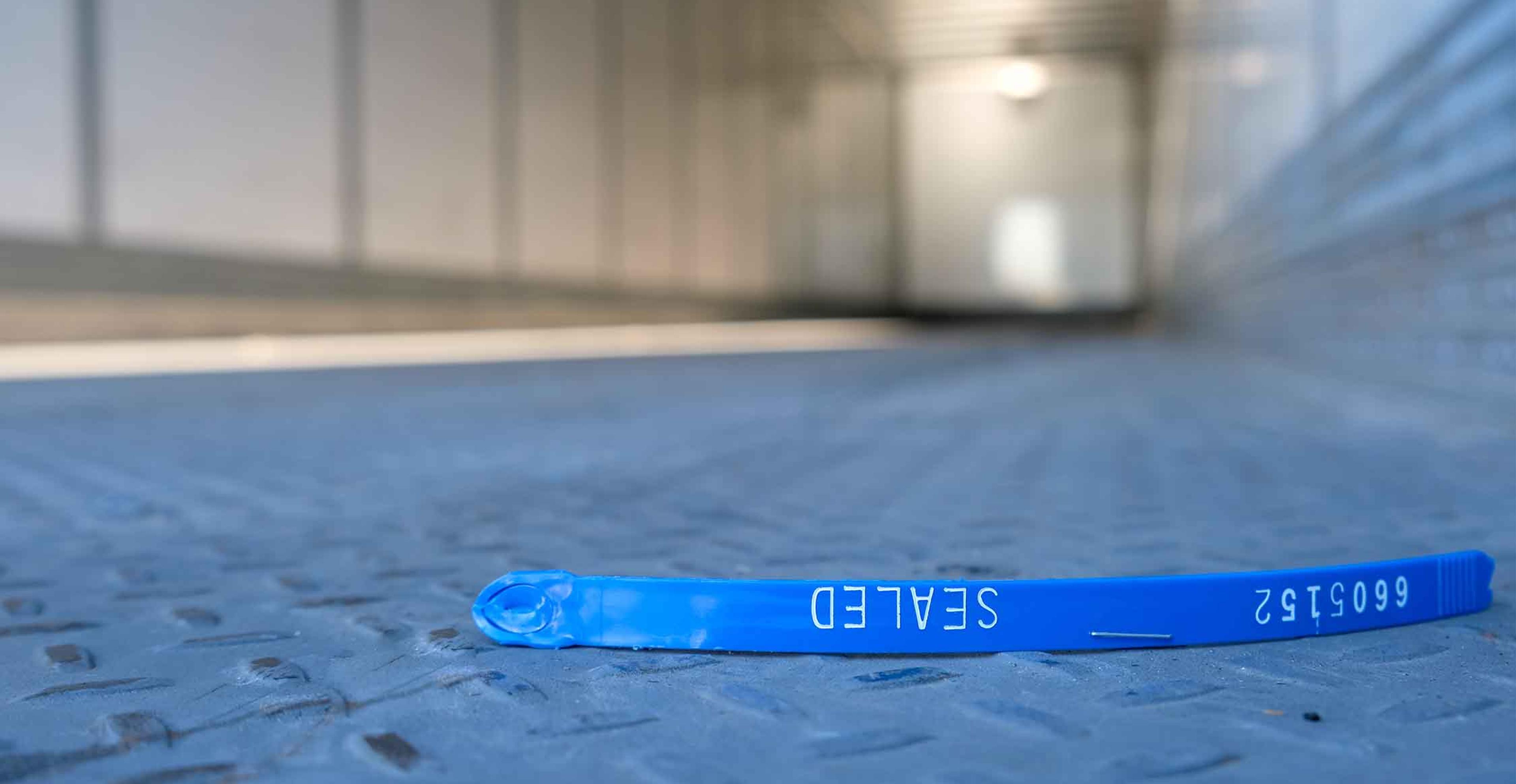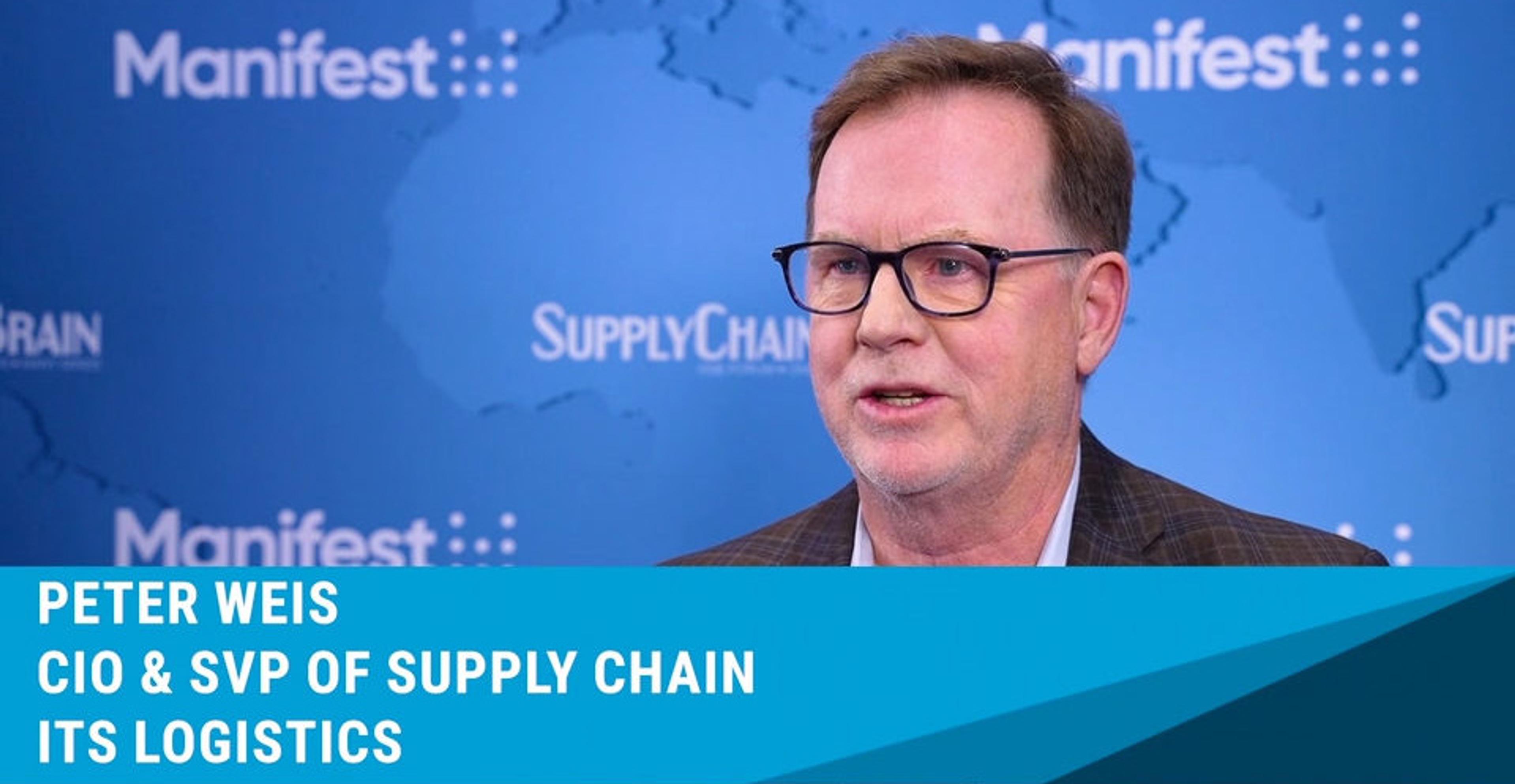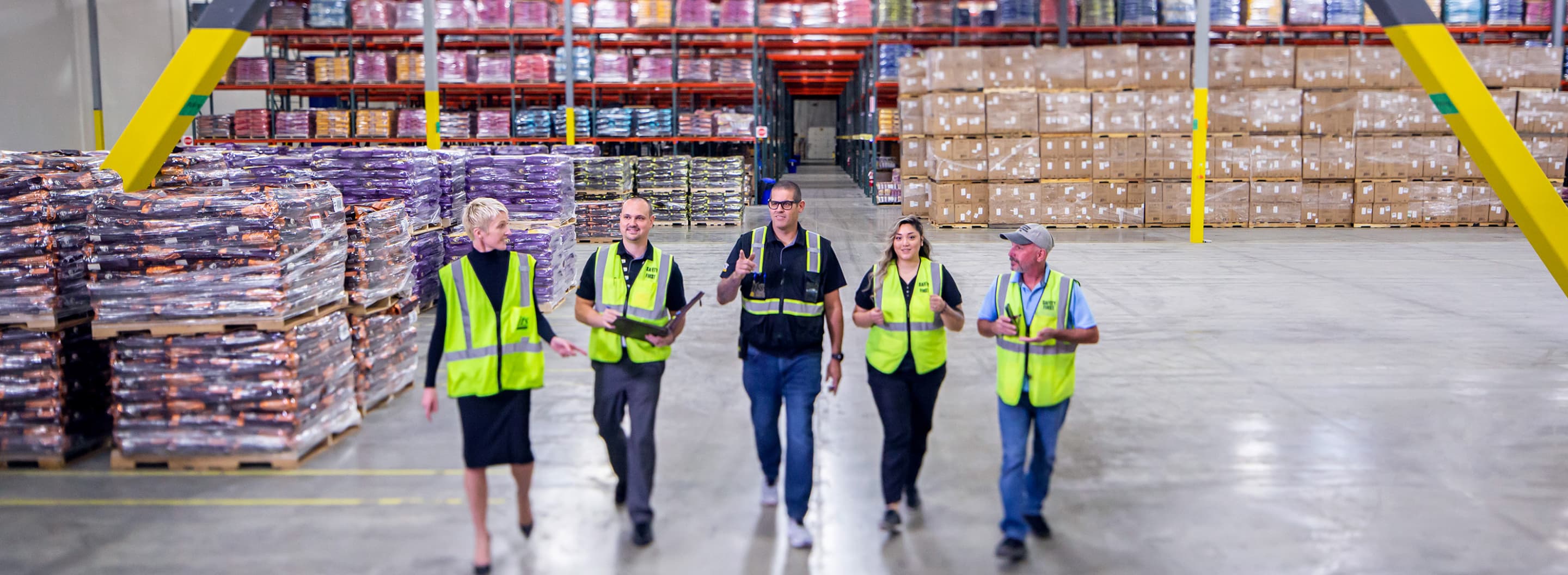
If you’re familiar with the world of supply chain technology, Peter Weis needs no introduction. A mission-driven leader who has guided multiple organizations through enterprise transformations, Peter joined ITS Logistics as CIO and Senior VP of Global Supply Chain in late 2022 to spearhead the company’s digital journey. Since then, he has been at the helm of ITS’s proprietary tech strategy, ensuring the company’s software solutions are not only cutting-edge but also strategically aligned with ITS’s high growth business strategy.
Today, Peter spends most of his time at the ITS Innovation Center in the San Francisco Bay Area, where he leads technology initiatives and oversees development teams across California, Nevada, and India. Last week, he stopped by the Reno headquarters to discuss ITS’s digital transformation, his philosophy for software development, and why supply chain companies must view technology as a true differentiator:
You’ve done a lot of great work in digital transformation throughout your career, especially in supply chain. What are some of the biggest challenges when it comes to innovating in this industry?
One of the unique challenges of our industry has to do with the sheer number of partners required to manage a supply chain shipment from end to end, and the resultant data complexity in making a supply chain strategy really sing. In order to provide value to customers, your solutions need to tie in as many partners as possible and capture as much relevant data as possible. We want data from suppliers, ocean carriers, customs brokers, forwarders, warehouses, and others across the supply chain. We need to connect with them. We need their data, and they need ours. We need to be able to make sense of that data and either clean up or toss out the data that's inaccurate or irrelevant. Measure only what matters and let the rest go. Solving that problem is so multifaceted. It's not as simple as other industries, where more of the control resides within the four walls of one company.
The other issue is when companies lack the resoluteness to fulfill their vision. After embarking on what they think is their supply chain strategy, they become distracted, they move too slowly, or they try to stop and restart efforts based on their short-term business results. This can lead to building what I call a “half-finished overpass.” I watched the San Francisco Bay Bridge get built, which was planned to take 5 years. It wound up taking 11 years and cost over $6 billion. Yes, it was late and over budget, but it was completed and it’s beautiful! But imagine if they didn't finish the last 20 percent. You get zero value from an unfinished bridge, and you also breed cynicism and a sense of wasted money. All that to say: individual projects don't have ROI; strategies have ROI. And it’s really easy for companies, particularly with all the activity and new entrants in the supply chain space, to get distracted if they don’t have a locked-down strategy. Then they end up building things that don't get to the other side and don't deliver value.
You’ve spent the past two years hunkered down at the ITS Innovation Center. What have you been up to?
Has it only been two years?
To put it in so many words, we’ve built our own cloud-based technology ecosystem for our operations. This company was unafraid to invest millions—to innovate from the inside out, really—in our own in-house platform. One hundred percent of our asset-lite business—both drayage and truckload—now flows through this platform, and the software is all under our control. I like to say it’s “fast, up, and safe.” “Fast” meaning our transactions are two seconds or less. In fact, it's south of 1.5 seconds from the time you click to the time the screen is rendered. We're “up” at four nines levels of availability, which means we only have four to five minutes of downtime a month. And we're “safe”: we've invested significantly in our information security strategy. We're in the process of finalizing SOC 2 Type II certification, to add that additional outside-audited level of security. And we did it quickly. We didn't debate it for six months or a year and a half; we just got started the moment I got here. That's our size and our culture combining to make things go fast. I would stack up our performance and our uptime against any of our competitors, there's no doubt.
Why is tech differentiation so important for 3PL providers?
My belief has always been that any supply chain company cannot get out of the business of being great at software. It's an absolutely core tenet in our space because of how much market-facing work we do in tying together customers and partners.
When you use third-party software, you can’t control the code and you’re beholden to a third-party software company to get new features and to stay current in this rapidly changing industry. And when they do build it, your use of it is not unique. Everyone gets the exact same thing. That’s the definition of a commodity. So, when you view your technology as a commodity, you get stuck in a race to the bottom. You spend as little as possible. You expect lower prices because you have no way to differentiate yourself from the dozens of other 3PLs using that same third-party software. You’re stuck in defense forever.
But when you decide to make tech your differentiator—which, for us, meant building our own platform—you go on offense. Your fate is in your hands, and you’re limited only by your vision, your talent and your ability to execute at world-class levels. We are now innovating and rolling out AI-enabled features at a rapid pace, only because we undertook and completed the heavy lifting required to deliver a single cloud-based platform that manages every single shipment. No half-finished overpasses at ITS!
What are some of the biggest issues ITS‘s new technology and platforms are solving for?
The traditional way business used to run—the Chicago model of separating sales and procurement—can be slow and frustrate both carriers and customers. They don't want to wait; they want a quote right away. They want us to procure a carrier right away—and they want to know that carrier has a strong track record of safety and delivery. And the speed at which we have to do that for customers continues to increase. So, we’ve built a system that’s made the process virtually instantaneous. The moment we commit to a price for a customer, we are also in a position to procure a highly qualified carrier, one that is safe and proven. We know we're going to have technology to track that shipment end to end. And we can do it in a way that is economically viable.
So, the tech is fast, but at ITS, we believe that the best customer experience also requires a human touch, as necessary. Relationships still matter, and, in fact, are becoming more important as velocity increases in our industry. Companies that seek 100 percent automation in our industry usually fail. While that approach may work for a simple, low-cost rideshare app transaction, the bar is much higher when you're trusting millions of dollars in product to your 3PL. We believe that in this business you have to be super fast, cost-effective, and still have the touch points that matter most to customers. That's the key to our industry: Can we be fast and human at the same time?
That's not easy, and I think that's what we have achieved.
In today’s climate, businesses value the promise of AI, while a lot of employees fear it. What’s the secret to marrying AI-driven technology with a people-first culture like we have at ITS?
AI is revolutionary tech, but the notion and process of rolling out technology changes to an organization and human’s ability to accept and thrive with it? That’s evolutionary, not revolutionary.
All waves of technology adoption have certain things in common: People have a certain way of working. They've gotten paid for working that way; it has made them feel safe. And when they listen to some great talk by me, they're not thinking, Oh, that is absolutely amazing. I'm all in. You know what they're thinking? How does this affect me? My job? My future? You need to meet people where they are, but you can’t back down. Meet people where they are and be resolute in rolling out changes.
It’s one thing to make a set of changes; it's another thing to build a culture that is comfortable with change—to be comfortable being uncomfortable. Tech plays a big role in that, but it’s also operations. It’s human resources. And it's even marketing. So, you have to do all of those things incredibly right to bring people along. And if you do that, you're going to have a lot more wins than losses.
Is there a specific philosophy you use to guide development and innovation?
Building great software is really fun, and it's sexy for engineers. But driving that software successfully and quickly to the production floor and getting all the pain points right is part of the journey most organizations overlook. My philosophy is that we will never, ever get 100 percent of it right in an early release—so we iterate, quickly. We start with a 70 percent solution knowing there will be follow-on work that drives additional efficiencies. If you try to do 100 percent on day one, you're going to waste money building things you don’t need and miss things you do need. After the 70 percent solution is launched, we implement change management strategies to quickly build out the remainder. And then we go on offense, knowing that the core platform will effectively scale the company’s growth strategy. A simple example is measuring the number of user clicks for each shipment. With the insights we’ve gained watching the application be used on the floor, the amount of work it takes inside the application to manage a load has been cut by nearly 50 percent. That kind of work is not sexy, but add up those changes over 570,000 loads and you drive very significant savings. It’s that kind of incremental, unsexy work that you have to grind at to really win.
What’s coming next for ITS’s tech road map?
With all our transportation business on one platform now, we have no less than ten initiatives underway that are truly AI-enabled. They are going to drive things like better predictive pricing, more accurate buying from our carriers, higher utilization of our trailers, optimizing our overall network, and development of generative AI that answers critical questions in seconds. Do we know where all our trailers are, and are they where they should be? Do we have a sense of the health of our network, and can we see when the network gets out of sync as early as possible, even predict it? There are so many use cases for AI that are enabled by owning our platform. And that's a differentiation—not just that we built it, but what we plan to do now that it's live. That's the exciting growth phase that we're in right now.
I couldn't be more excited. Seriously, the fun starts now. The hardest work is done, and now it’s go time.



